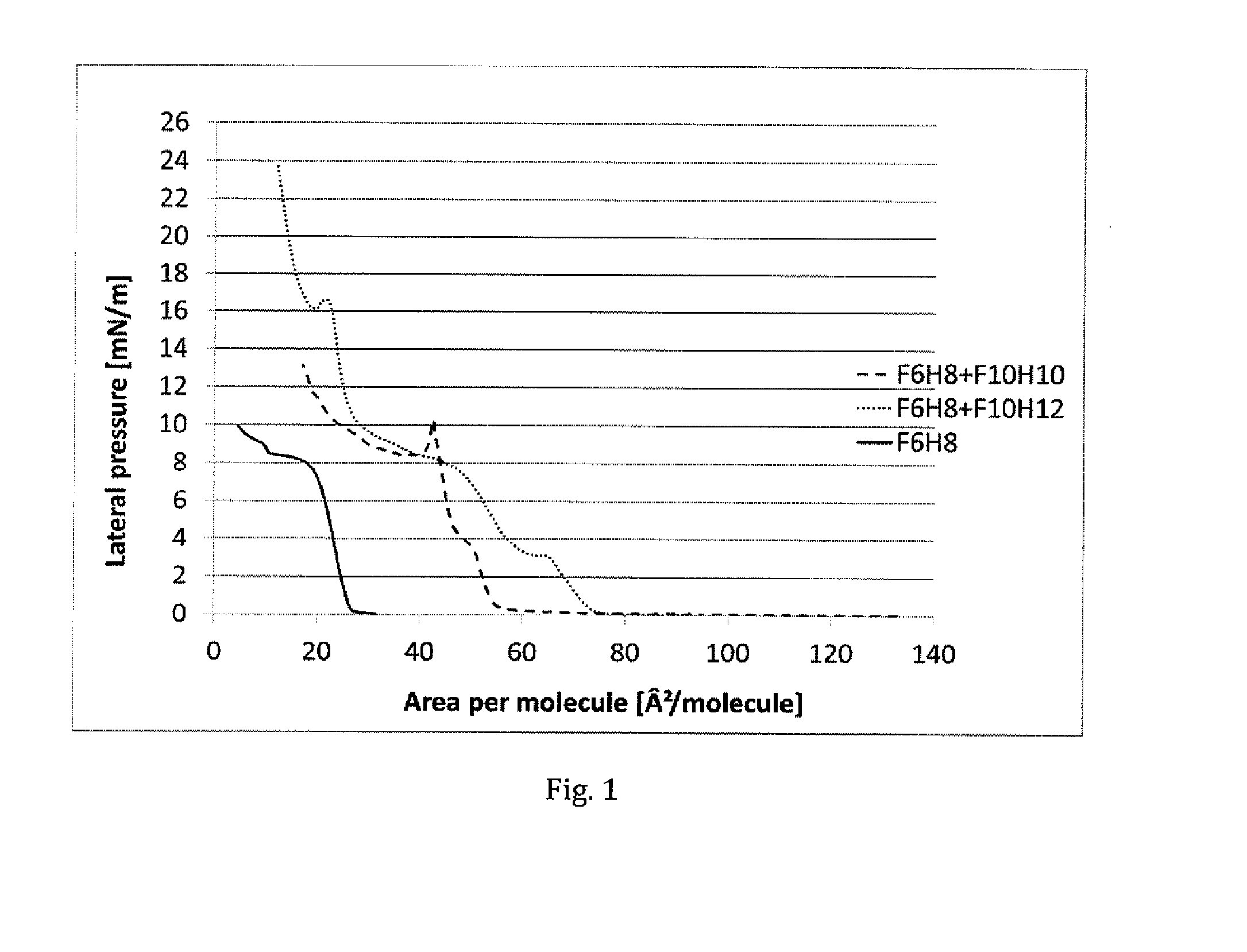Compositions comprising mixtures of semifluorinated alkanes
a technology of semifluorinated alkanes and compositions, applied in the field of ophthalmic compositions, can solve the problems of hyperosmolar tear fluid, dry eye disease, visual disturbance, etc., and achieve the effect of reducing the number of ophthalmic patients, and improving the quality of li
- Summary
- Abstract
- Description
- Claims
- Application Information
AI Technical Summary
Benefits of technology
Problems solved by technology
Method used
Image
Examples
example
Example 1
[0086]Langmuir-Blodgett isotherm measurements were taken for neat F6H8 (F(CF2)6(CH2)3H), and for mixtures of F6H8 with F10H10 (F(CF2)10(CH2)10H) and with F10H12 ((F(CF2)10(CH2)12H).
[0087]A solution of F6H8 in chloroform (1 mg / mL) was prepared. 594 of this solution was spread onto a Langmuir-Blodgett trough with Milli-Q-purified water as the sub-phase at 25° C. After allowing the solvent to evaporate (15 min), compression was initiated at a barrier rate of 4 cm2 / min. Similar conditions were used for the semifluorinated alkane mixtures.
[0088]In result, the isotherm of neat F6H8 (F(CF2)6(CH2)3H) demonstrated that it has poor capability for forming a stable monolayer. The isotherm shows predominantly a liquid expanded (LE) characteristics, upon further compression there appears to be only a very brief ordered liquid condensed (LC) phase. The isotherms of the mixtures of F6H8 / F10H10 and F6H8 / F10H12 in contrast show a significantly detectable transition of an LE phase to the more...
PUM
| Property | Measurement | Unit |
|---|---|---|
| weight ratio | aaaaa | aaaaa |
| weight ratio | aaaaa | aaaaa |
| surface tension | aaaaa | aaaaa |
Abstract
Description
Claims
Application Information
 Login to View More
Login to View More - R&D
- Intellectual Property
- Life Sciences
- Materials
- Tech Scout
- Unparalleled Data Quality
- Higher Quality Content
- 60% Fewer Hallucinations
Browse by: Latest US Patents, China's latest patents, Technical Efficacy Thesaurus, Application Domain, Technology Topic, Popular Technical Reports.
© 2025 PatSnap. All rights reserved.Legal|Privacy policy|Modern Slavery Act Transparency Statement|Sitemap|About US| Contact US: help@patsnap.com

